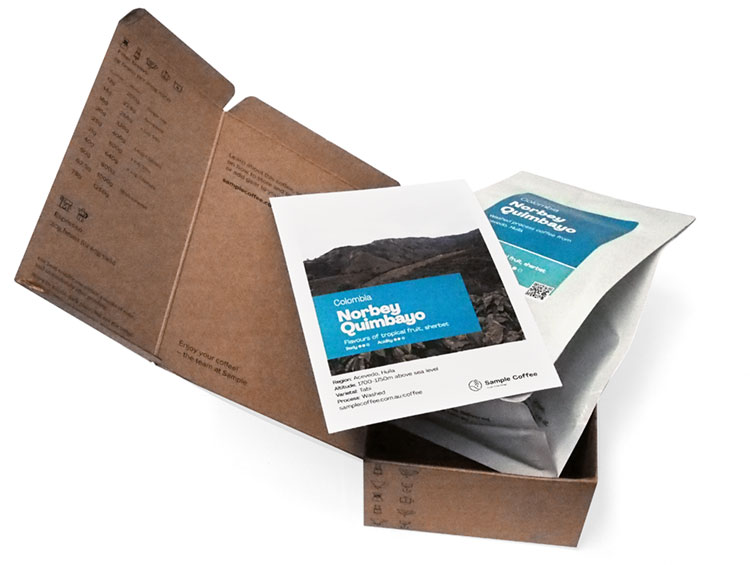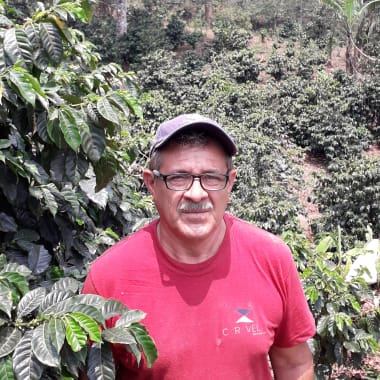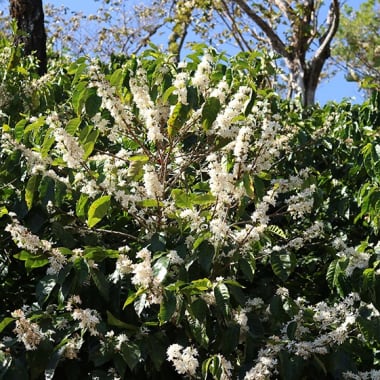-
Producer
-
1,074 Smallholder Farmers Working With Greenco Coffee
-
Farm/Coop
-
Nemba Washing Station
-
Country
- Burundi
-
Region
-
Kayanza
-
Altitude
-
1700m above sea level
-
Variety
-
Process
-
Harvested
-
July 2024
-
Importer
-
Sucafina
-
Body
-
-
Acidity
-
-
Tasting notes
-
Rhubarb, vanilla, dragon fruit
-
Roast style
Burundi
Nemba
Oro™ YeastThe ORO™ yeast allows for a controlled fermentation process at any ambient temperature, enhancing each lot’s expression and fruitiness.
Nemba station lies in the northern province of Kayanza. The lead agronomist oversees the implementation of Good Agricultural Practices (GAPs) and farmer education. They collaborate with producers to ensure they have access to the necessary farming tools. The agronomist also helps farmers determine and implement the practices best suited to the specific growing conditions of their farming plots.
Nemba uses a monitoring system to ensure traceability all along the production and processing chain. All 1,074 producers are smallholders who own an average of 150 coffee trees. The farmers delivering cherry to Nemba are all located around 1,700+ meters above sea level, near the Kibila forest. The washing station has over 200 drying tables and can process up to 750 metric tons of cherry annually.
The washing station participates in a number of farmer outreach and support projects including a livestock rearing project and a range of Farmer Hub projects centered on strengthening cooperatives and improving yields.
Yeast Inoculation
LALCAFÉ ORO™ yeast (Saccharomyces cerevisiae) was specially developed for coffee production over a four-year period of research and trials. Trials in various regions and environments showed that Oro is well suited to better control the wet process’ efficiency and to upgrade the cup quality. Oro’s ability to flourish even at low temperatures means it is equally suited for use across most altitudes. The yeast is able to control the fermentation process against the risk of spoilage micro-organisms that can generate undesirable defects. Furthermore, its specific metabolism and its high capacity even at cold temperatures (minimum 15°C inside the coffee tank) allows for the expression of fresh and fruity characteristics of the coffee beans while respecting the flavors of each unique coffee.
The longer fermentation time for yeast-processed coffees (washed processed typically ferments for about 12 hours) also allows for more developed flavors. The extra time enables the beans to absorb metabolites, which can enhance flavors. Complexity, acidity, brightness, floral notes and more are all boosted by the lengthened fermentation time.
After fermentation is completed, coffee is run through washing and grading canals. In total, the channel separates beans into seven grades according to density. After washing, parchment is poured onto wooden trays or nylon bags and carried to the drying tables, each in its separate quality group. Each tray and nylon bag of parchment keeps its traceability tag with all info.
Parchment is laid on raised beds to dry. While drying, parchment is repeatedly sorted and sifted to ensure even drying. Parchment is left to dry from sunrise to sunset and is covered with a sheet during the evening or when it rains. If the weather conditions are good, the parchment takes on average 10 to 14 days to dry. The moisture level is carefully monitored and any parchment with visual defects is removed.
Once dry, the parchment coffee is then bagged and taken to the warehouse. Greenco’s team of expert cuppers assess every lot (which are separated by station, day and quality) at the lab. The traceability of the station, day and quality is maintained throughout the entire process.
Learn everything about this coffee:
Ethical, traceable sourcing
This page has all the sourcing information (variety, process, region, story, importer, and more) that our importers share with us, and give us permission to use.
The transparency helps us talk confidently about the quality and background of our product, and it helps you know exactly what you’re buying.
Learn more:
Coffee page transparency legend
Our coffee philosophy
Our business approach
Fresh harvest coffee
We only source and roast coffee from each country’s latest harvest season (so the green coffee is never older than 1 year from the time of picking, processing and packing). This ensures the sensory qualities are always at their peak and unaffected by excessive ageing.
Roasted for espresso and filter (best enjoyed black)
Roast style: omni. Omni roasts are designed to brew and taste great both as espresso and filter. Our omni single origins generally sit on Agtron values in the ~70-60 value range. So, technically, they are somewhere in the lighter side of the medium spectrum.
Designed for espresso and filter brewing. Best enjoyed black.
Learn more:
Our Loring Kestrel S35 roaster
Our roasting style and approach
Best brewed within days 15-49 post-roast
The ‘fresh is best’ saying doesn’t apply to coffee (contrary to popular belief). Waiting before opening and brewing your bag of whole coffee beans helps develop peak flavour and acidity.
But heads up: if you buy pre-ground coffee, brew it as soon as possible.
Learn more:
Our recommended brewing window
Try our custom brewing recipes
Our recipes and ratios are tailored to our coffee sourcing and roasting styles, bringing the best flavour and feel out of each coffee.
For pour over, immersion, and other filter brewing styles, check our brew guides.
For our espresso single origins, we recommend a coffee:yield ratio of 1:3:
- Dose: 20g ground coffee
- Yield: 60g espresso
- Total brew time: ~24-28 seconds
This is just a starting point! We encourage you to experiment, taste, and adjust to find the recipe that you enjoy the most.
Learn more:
Our espresso brew guide (single origin)
Brewing ratio calculator
Packaging and sustainability
- Bags: ABA-certified home compostable (AS 5810-2010)
- Labels: recyclable
- Valves (only on +250g bags): general waste
- Box and tape (online orders): recyclable
Learn more:
Our packaging
Variety
Red Bourbon variety
The location
Coffee from Burundi
Coffee first arrived in Burundi in the 1920s while the country was still under Belgian colonial rule. Since the civil war in 1993 Burundi has placed a great importance on growing the coffee industry and the flow on effects that will have on the country’s economy.
The Kayanza region of Burundi
Northern region near the Rwandan border
Farm processes
Yeast Inoculated (Oro™) + Fully Washed process
Machines are used to remove the flesh from the coffee cherry before being fermented in water, washed again, and finally sun dried. This process tends to result in more distinct, cleaner flavours.

Subscribe to a world of coffee
Discover a new single origin coffee from Sample every 1-5 weeks with no delivery fees.
No up-front purchase, and you can pause, cancel, or change plans at any time.
Available to order online this week:

Ethiopia Bookkisa
Flavours of burnt orange, poached pear, vanilla
Body Acidity
Washed 74110, 74112
February 2025 harvest
Roasted omni for filter and espresso
Ethiopia Bookkisa online
Colombia Carlos Imbachi Pink Bourbon
Flavours of pear, jasmine, sugarcane
Body Acidity
Washed Pink Bourbon
February 2025 harvest
Roasted omni for filter and espresso
Colombia Carlos Imbachi Pink Bourbon online
Nicaragua Mario Ortez
Flavours of lime, cranberry, nougat, guava sorbet
Body Acidity
Washed Caturra
April 2025 harvest
Roasted omni for filter and espresso
Nicaragua Mario Ortez online
Ethiopia Girma Sintayehu Honey
Flavours of apricot, mango, coconut, pineapple
Body Acidity
Honey 75227, Wolisho
February 2025 harvest
Roasted omni for filter and espresso
Ethiopia Girma Sintayehu Honey online